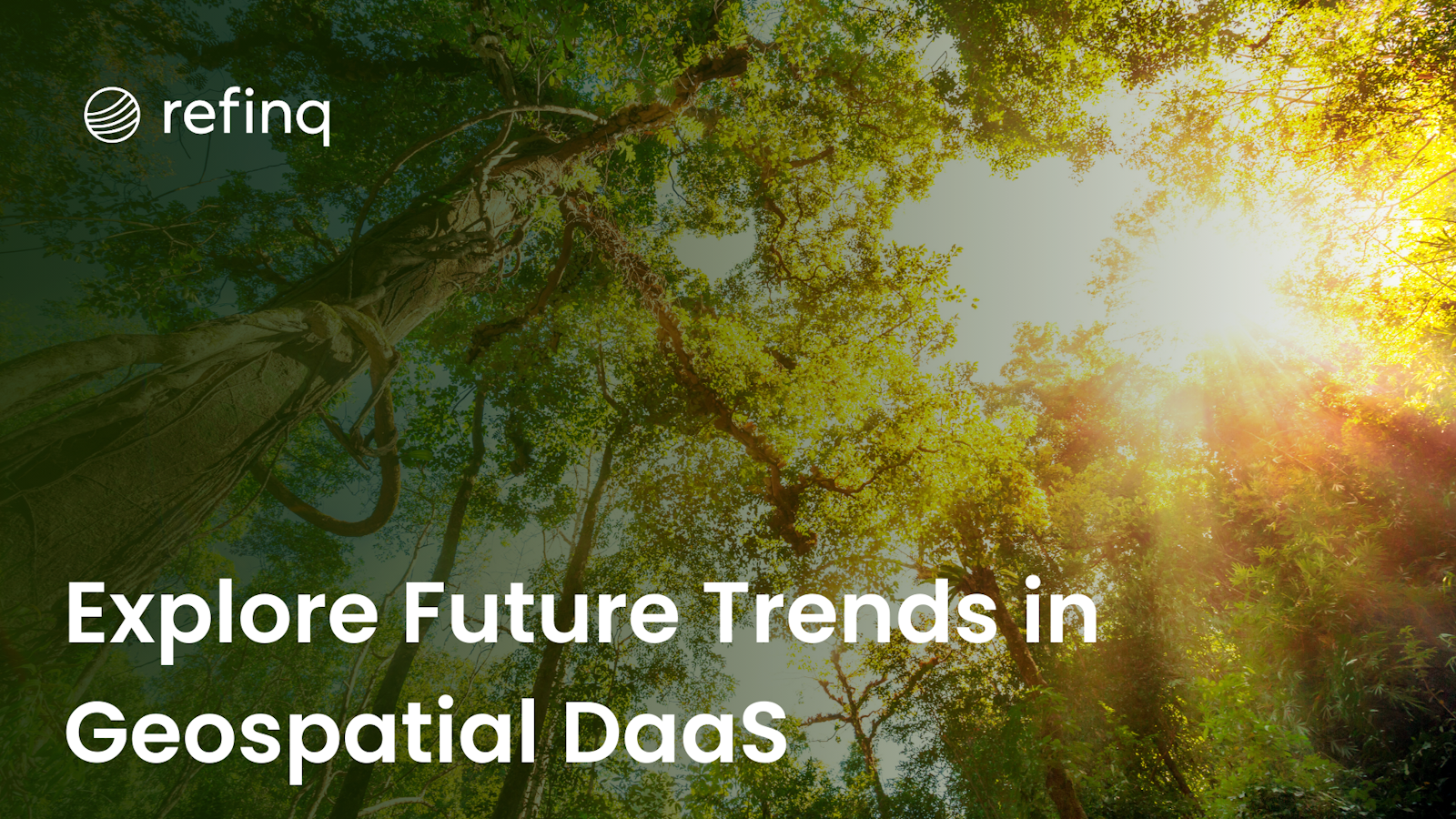

The geospatial industry is undergoing a significant transformation, with Geospatial Data as a Service (DaaS) emerging as a pivotal solution for businesses seeking location-based insights. This evolution is driven by advancements in technology, increasing data availability, and the need for real-time analytics. (Explore the future trends in geospatial intelligence). Companies like refinq are at the forefront of this revolution, offering advanced geospatial analysis tools that help enterprises manage environmental risks and develop sustainable strategies. (Discover how refinq empowers businesses).
The incorporation of Artificial Intelligence (AI) and Machine Learning (ML) is set to revolutionize geospatial data processing. These technologies enable automated data analysis, pattern recognition, and predictive modeling, making geospatial insights more accessible and actionable. (Learn about recent trends in geospatial technologies and AI).
With the advent of the Internet of Things (IoT) and improved sensor technology, real-time geospatial data streaming is becoming a reality. This allows businesses to make immediate decisions based on the most current information, enhancing responsiveness and efficiency.
Cloud computing is making geospatial data more scalable and cost-effective. Geospatial DaaS providers are leveraging cloud platforms to offer flexible solutions that can handle massive datasets without significant infrastructure investments. (Understand how cloud solutions are shaping geospatial DaaS).
Advanced visualization tools are improving the way geospatial data is presented, making it easier for users to interpret complex information. Interactive maps, 3D modeling, and virtual reality applications are enhancing user engagement and decision-making capabilities.
As geospatial data becomes more integral to business operations, concerns about data security and privacy are intensifying. Future trends point toward stronger encryption methods, compliance with regulations like GDPR, and transparent data handling practices.
The movement toward open data is fostering collaboration between governments, organizations, and individuals. Sharing geospatial data enhances innovation and allows for more comprehensive analyses, benefiting various sectors from urban planning to environmental conservation. (Read about future trends in geospatial data).
Geospatial DaaS is playing a critical role in monitoring environmental changes and promoting sustainability. Businesses are utilizing geospatial insights to assess climate risks, manage natural resources, and develop eco-friendly strategies. (Discover how geospatial data analytics contribute to sustainability).
As promising as these future trends are, several challenges could impact the widespread adoption of Geospatial DaaS innovations.
With the increasing volume of geospatial data, protecting sensitive information becomes more complex. Businesses must navigate stringent data protection laws like GDPR and ensure robust security measures are in place. Failure to address these concerns could hinder adoption. (Understand the challenges in geospatial data management).
Implementing advanced geospatial technologies requires specialized knowledge. The lack of skilled professionals in AI, ML, and geospatial analytics can slow down adoption rates. Organizations may need to invest in training or hiring experts to bridge this gap. (Explore strategies to conquer GIS implementation challenges).
Integrating new geospatial solutions with legacy systems can be challenging. Compatibility issues, data format differences, and the need for significant system overhauls may deter businesses from adopting the latest innovations.
While cloud-based solutions reduce infrastructure costs, the initial investment in software, training, and data acquisition can be substantial. Smaller businesses might find it difficult to allocate resources for these expenses.
Inconsistent data quality and lack of standardization can affect the reliability of geospatial insights. Ensuring that data from various sources is accurate, up-to-date, and compatible is essential for effective analysis. (Learn about opportunities and challenges in geospatial technologies).
Navigating the complex landscape of regional and international regulations regarding data use and sharing can be daunting. Non-compliance can result in legal repercussions, affecting the adoption of geospatial innovations.
refinq is a pioneering SaaS platform that embodies many of these future trends, particularly in environmental monitoring and sustainability. By processing over 2.5 billion data points from earth observations and climate models, refinq provides real-time risk evaluations and forecasts of future environmental impacts with a granularity of up to 25 meters for any global location. (Explore refinq's climate solutions).
AI and Machine Learning Integration: refinq utilizes machine learning algorithms to translate complex environmental data into actionable insights, enabling businesses to navigate nature-related risks effectively.
Cloud-Based Scalability: As a cloud-based platform, refinq offers scalable solutions that grow with your business needs, eliminating the need for significant infrastructure investments.
Advanced Data Visualization: The platform features user-friendly tools for climate and biodiversity risk analysis, providing intuitive visualizations that enhance understanding and decision-making.
Security and Compliance: refinq aligns its assessments with international disclosure frameworks like TNFD, CSRD, ESRS, and SBTN, ensuring compliance with regulatory demands and data security standards.
Environmental Focus: With capabilities to forecast environmental impacts based on four climate scenarios extending to the year 2100, refinq empowers businesses to develop sustainable, nature-positive strategies. (Discover refinq's biodiversity solutions).
By integrating these cutting-edge features, refinq not only addresses current business needs but also positions itself as a leader in the future landscape of Geospatial DaaS.
The future of Geospatial Data as a Service is bright, with emerging trends poised to transform how businesses access and utilize location-based data. Integration of AI and machine learning, real-time data streaming, cloud scalability, enhanced visualization, heightened security, open data collaboration, and environmental applications are key trends to watch. Companies that embrace these advancements will gain a competitive edge, improve operational efficiency, and contribute to sustainable development.
Platforms like refinq are instrumental in this evolution, offering innovative solutions that align with future trends and address the growing needs of businesses across various industries. By staying ahead of the curve, refinq helps organizations navigate the complexities of environmental risks and leverage geospatial data for strategic advantage.
Future Trends in Geospatial Intelligence: Third Edition Report (GGIM)
Recent Trends in Geospatial Technologies and AI for Water Resource Management (ResearchGate)